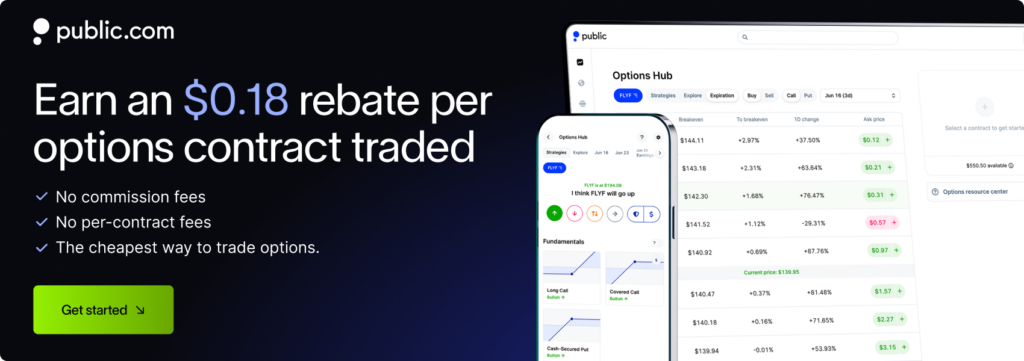In the world of financial trading, few concepts are as simultaneously enticing and intimidating as leverage. At its core, leverage amplifies the potential for both gains and losses, making it a double-edged sword that traders must wield with caution. In options trading, leverage takes on a unique role, offering opportunities that can be both lucrative and risky. For modern investors, understanding this concept is crucial, especially in an era where financial instruments are becoming increasingly sophisticated.
Leverage Explained: The Role of Borrowed Capital in Options Trading

Table of Contents
What is Leverage?
Leverage, in its simplest form, refers to the use of borrowed capital to increase the potential return on an investment. Think of it as a tool that can magnify both potential profits and potential losses.
Formula: Leverage Ratio = Total Value of Investment / Investor’s Equity
For instance, if you have exposure to an asset worth $100,000 with an investment of $10,000, your leverage ratio is 10:1. This means for every dollar of your own money, you’re managing $10 of assets.
In the broader realm of financial trading, leverage is indispensable. It allows traders to gain exposure to larger positions with a smaller amount of capital, thereby amplifying potential returns. However, it’s essential to remember that while leverage can magnify profits, it can also magnify losses.

How Leverage Works in Options Trading?
Options trading inherently involves leverage. When you buy an option, you’re essentially gaining exposure to a larger amount of the underlying asset without having to pay its full price.
-
Buying Options on Margin: Trading on margin means borrowing money from a broker to purchase securities. In the context of options, it allows traders to buy more contracts than they could with their own capital alone.
-
Impact of Borrowed Capital: The use of borrowed capital in options trading may amplify potential returns but may also amplify potential losses. For instance, if an option position funded partly with borrowed money goes in your favor, the percentage return on your actual invested capital can be higher than if you had not used leverage. Conversely, if the position goes against you, the losses can be equally magnified.
-
Risks and Rewards: Leverage is a powerful tool, but with great power comes great responsibility. The potential for higher returns is counterbalanced by the risk of substantial losses. It’s crucial for traders to manage their risk appropriately, using tools like stop-loss orders and diversifying their portfolios.
Example of Leverage in Options
To truly grasp the impact of leverage in options trading, let’s delve into a real-world example.
-
Scenario: Imagine you have $1,000 to invest. Instead of buying a stock directly, you decide to buy call options that give you the right to buy that stock at a specific price. Because of the leverage inherent in options, your $1,000 gives you exposure to, say, $10,000 worth of the stock.
If the stock price rises by 10%, the value of your option might increase by 50% or even 100%, depending on the leverage. This means your initial $1,000 investment could turn into $1,500 or even $2,000. However, if the stock price falls, the decline in your option’s value could be just as dramatic, potentially leading to a significant loss.
-
Analysis of Outcomes: In the above example, the leverage provided by options magnified the returns, but it also could have magnified the losses. It’s a clear demonstration of the risk-reward trade-off that leverage presents.
-
Lessons Learned: Leverage in options trading is not for the faint-hearted. It requires a clear understanding of the risks involved, a well-thought-out strategy, and the discipline to stick to that strategy. While the potential rewards are enticing, it’s essential to never lose sight of the potential risks.
Leverage plays a pivotal role in options trading, offering opportunities for enhanced returns but also bringing increased risks. As with all financial tools, understanding and respect are key. By comprehending the mechanics and implications of leverage, traders can make informed decisions, optimizing their potential rewards while mitigating potential downsides.

Pros & Cons of Using Leverage
| Pros of Leverage | Cons of Leverage |
|---|---|
| Amplified Returns: Leverage can significantly increase the potential return on an investment. | Magnified Losses: Just as profits can be amplified, so can losses. |
| Enhanced Buying Power: Allows traders to access a larger position with a smaller amount of capital. | Interest Costs: Borrowing funds to leverage comes with interest costs that can eat into profits. |
| Flexibility: Offers the ability to enter and exit positions that might otherwise be out of reach. | Potential for Margin Calls: If the market moves against a trader's position, they might face a margin call, requiring them to deposit additional funds. |
| Diversification: With increased buying power, traders can diversify their portfolio across more assets. | Complexity: Leveraged positions can be more complex to manage and require a deeper understanding of the market. |
Conclusion
Leverage, as we’ve explored, plays a pivotal role in the realm of options trading. It offers traders the ability to have exposure to a more significant position with a relatively smaller amount of capital, amplifying both potential returns and potential risks. This inherent duality underscores the importance of understanding leverage’s mechanics and implications fully.
Risk management, therefore, becomes paramount. While leverage can provide traders with enhanced opportunities, it’s crucial to approach it with a well-informed strategy. Employing techniques like diversification, setting stop-loss orders, and continuously monitoring market movements can help mitigate potential downsides.
For investors looking to delve deeper into the world of trading, platforms like Public.com offer a community-driven experience. At Public.com, you can not only trade but also learn from a community of investors, gaining insights and sharing knowledge. It’s about making the stock market inclusive, educational, and social, without the pressure of hype.
In the end, the world of options trading, with its myriad of tools like leverage, offers vast potential. However, it’s essential for investors to tread with caution, arm themselves with knowledge, and always prioritize risk management.
FAQs
What is the Maximum Leverage Available in Options Trading?
The leverage available in options trading varies based on the broker, the specific option, and market conditions. However, options inherently provide leverage as they allow traders to gain exposure to a larger amount of the underlying asset with a relatively small capital outlay.
How Do You Determine Leverage in Options?
Option leverage can be determined by comparing the price movement of the option to the price movement of the underlying asset. The formula is: Leverage Ratio = Percentage Change in Option Price / Percentage Change in Asset Price. This ratio indicates how much more the option’s price moves compared to the underlying asset.
Are Put Options Leveraged Similarly to Call Options?
Yes, both put and call options are leveraged instruments. They provide traders the opportunity to achieve greater market exposure through a smaller initial premium. The leverage in both types of options amplifies potential gains and losses.
How Does Implied Volatility Affect Option Leverage?
Implied volatility represents the expected price volatility of the underlying asset. As implied volatility increases, option prices tend to rise, affecting the leverage. Higher implied volatility can lead to higher potential returns, but it also amplifies the risk of substantial losses.